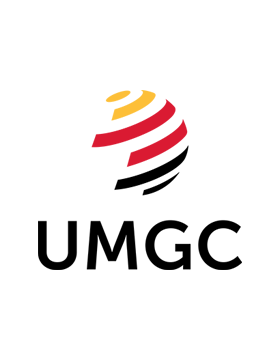An effective resume can be the ticket to a job interview. A well-crafted resume tells the story of your career in a way that explains why you are the right candidate for the job. Tailor your resume to target the industry of your choosing and the specific job posting you are applying for. Your resume should be job-specific and clear enough that anyone who reads it will easily see your work history and the skills you offer as a potential day-to-day future employee.
Format Your Resume Correctly
Nothing you say in your resume and cover letter will matter if the formatting is not up to par, says Aaron Case, a career counselor and Certified Professional Resume Writer (CPRW) at Resume Genius. Case emphasizes the importance of choosing a resume format that is easy to read which can ensure that your resume does not get overlooked. Case’s recommended formatting practices include the following:
- Breaking up text. Avoid a crowded look in your resume by using at least single line spacing and bullets.
- Using clear labeling. Case recommends using use bold text, all caps, and underlining where appropriate. This makes important information easy to locate on the page.
- Avoiding tiny text. It is ideal to use a 12-point font whenever possible. Case noted that if it is necessary, the smallest size that is acceptable to use is 10-point font
One easy way to get the right formatting is to utilize the resume resource within CareerQuest such as VMOCK and UpKey.
Market Your Experience
Every prospective employer wants to know as much as possible about your skill set. Your work history reveals where you have worked in the past and what you contributed to previous workplaces. In your skills section and work history make sure to highlight major achievements. This is more important than merely recounting your job title and work duties. Be specific by using numbers and other measures that fully explain what you achieved in the past.
Highlight your accomplishments by using quantifiable data (percentages, numbers, and dollar signs) to show your impact. For example, Case says that instead of saying you “worked as a cashier” you should provide details such as “assisted 50+ shoppers per shift as a cashier, achieving a 100% customer satisfaction rating.”
Showcase Your Education
Include the type of degree you received and your major along with the month and year of graduation or the anticipated graduation date. Be sure to use the entire university name along with the city and state. You can also highlight special projects, relevant coursework, and your GPA if it’s higher than a 3.5 if you do not have an extensive work history.
Customize Your Response
Make sure that your resume is tailored to the job to which you are applying. Highlight relevant skills that are important to that specific job. If you have transferable skills that are relevant to the new job, include those as well.
Do not include information that is irrelevant to the specific position you seek. Feel free to rearrange your resume so it better targets the position you seek. Even if this means you will have to revise the resume each time you apply to a new job, doing so is well worth the effort.
Use Keywords and Avoid Cliches
Embed keywords that showcase your hard and soft skills. Companies often use applicant tracking systems software to screen resumes, so keywords can be crucial to ensuring your resume gets through the first step of the process. Without the right keywords, it’s possible that nobody at the company will ever see your resume.
Make sure these keywords are relevant to the job post – for example, use “coding” for a job with computers. Avoid general terms such as “dependable” and “hardworking.” Instead, highlight the specific skills that make you unique. Also make sure to avoid using terminology that is not relevant to the job.
Be Accurate and Truthful
It is crucial that you avoid inaccuracies in your resume. Unintentional misstatements of facts, misspellings and typos portray you in a poor light, and might kill your job candidacy before it has a chance to begin.
Even worse are lies and exaggerations designed to “puff up” your credentials. Not only is this ethically wrong, but if such distortions are detected, they can quickly kill your chances of landing the job. Even worse, they might sully your reputation in your industry, as word can spread fast about what you have done.
Find Out Whether to Submit a Resume or a Curriculum Vitae (CV)
People use the terms "resume" and "curriculum vitae" interchangeably, but they are distinct. The CV is the full history of your academic and professional credentials. As a result, it can be quite long, often stretching to multiple pages. By contrast, a resume is much shorter and resembles something closer to a "snapshot" of your qualifications.
Generally, employers want to see a resume. However, there are situations where a CV might be more appropriate, such as if you are applying for an academic or research position.
If you are in the middle of a job search but are unsure which is appropriate – resume or CV – ask the recruiter or hiring manager.
Secrets to Becoming a Resume Champion
In summary, here are some things to keep in mind when crafting your resume:
- Tell your career story and make sure everything is up to date.
- Create a tailored resume for the industry.
- Use bullet points.
- Write in clear, concise, and easy-to-read language.
- Triple-check the resume to make sure it is free of spelling and grammatical errors. Run a spell-check of the resume.
- Describe your work history, using quantifiable data and highlight relevant skills.
- Limit resume to one-page, which is best. A two-page resume is OK, but do not go beyond.
- Include your contact information.
This information and more was covered in the recent webinar, How to Write a Job-Winning Resume. If you need assistance, check out the career services resume tools. If you are still finding yourself overwhelmed by the resume process, your UMGC Career Advising Specialists are here to help!


Share This